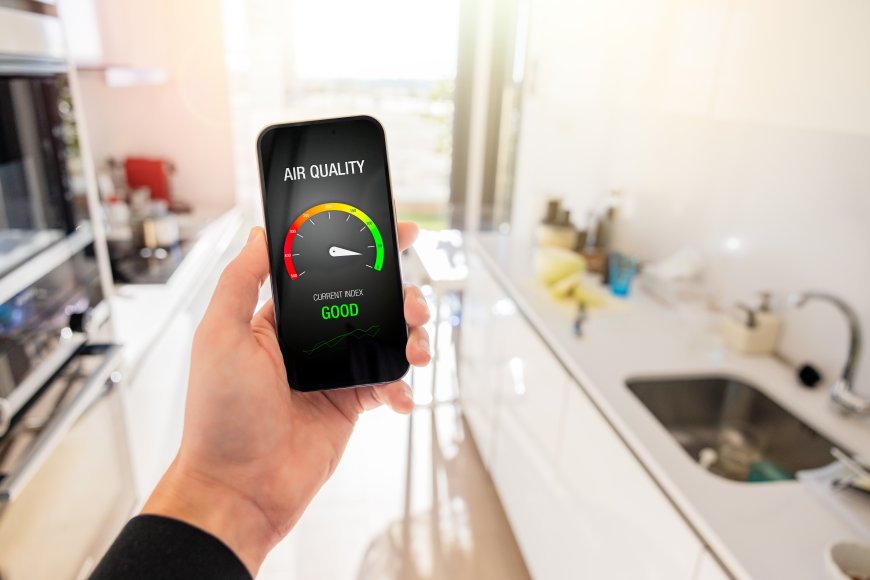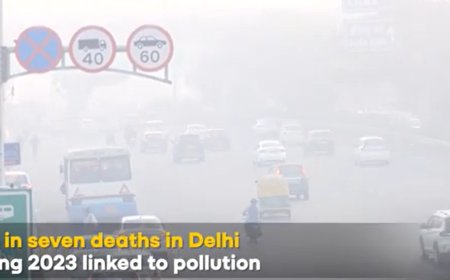What AQI Tells About a Nation - and How Indian Cities are Faring
AQI reflects a nation’s environmental health and policy effectiveness. Learn how Indian cities are performing and what their air quality says about urban living conditions.

Have you ever checked on your weather app and noticed a peculiar digit next to a colorful term like "Poor" or "Severe"? This digit is the AQI, and it is one of the most crucial scores a city can get!
The AQI not only informs about the need for a jacket; it also informs about the air you breathe, whether it is healthy or not, and whether the city is healthy or not. It is like a national health report card, and what it reveals about India is both difficult and optimistic.
Let us deconstruct this score, comprehend its implications, and find out how our Indian cities are performing in this significant global ranking.
What is AQI? (The Air Report Card)
Picture in your mind a test score ranging from 0 to 500. The more you get, the worse your performance is. The Air Quality Index (AQI) is the same for your city’s air!
The Full Form and Simple Meaning
The AQI full form is simple: Air Quality Index.
What does this entail? It is a single, easy-to-understand number that tells people how clean or polluted the air is at any given moment and what health risks are associated with it. It transforms complex information about tiny pollutants into a simple score.
What is AQI in Weather?
When you check the weather, you will see the temperature and probably a sun or rain cloud. The AQI is just as significant!
Scientists get the AQI score by evaluating the amount of different invisible 'guests' in the air. The most well-known ones are:
PM2.5 and PM10
The latter refers to a few dust particles that are particularly small. PM2.5 is 30 times smaller than a human hair! They are so small that they can go deep into your lungs and even your blood circulation unnoticed.
Ozone (Smog), Carbon Monoxide, and Nitrogen Dioxide
These are all different types of gases that can have a negative impact on your respiratory system.
The value you see is determined by the most polluted air component at that moment.

The AQI Color Code: Know Your Risk
The AQI uses six colors to give you quick health advice. It’s important to know what they mean, especially if you or someone you know has asthma or another breathing problem.
|
AQI Range |
Color |
Level of Concern |
What It Means |
|---|---|---|---|
|
0–50 |
Green |
Good |
The air is clean! You can play outside as much as you want. |
|
51–100 |
Yellow |
Satisfactory/Moderate |
The air is generally okay, but very sensitive people should be careful. |
|
101–200 |
Orange/Light Red |
Poor/Unhealthy for Sensitive Groups |
People with lung or heart problems should limit time outdoors. |
|
201–300 |
Red |
Very Poor/Unhealthy |
Everyone might start feeling some effects (coughing, tiredness). Limit outdoor exercise. |
|
301–400 |
Purple |
Severe/Very Unhealthy |
Health warning! Everyone is likely to be affected. Avoid all outdoor activity. |
|
401–500+ |
Maroon |
Hazardous |
This is an emergency! Stay indoors and use air purifiers if possible. |
Table: AQI Color Code
AQI Ranking: India’s Position
Besides, when analyzing the AQI rankings by country, it is evident that India has a tough challenge ahead. Every year, the IQAir group publishes "World Air Quality Report," which has their results, and they point out how severe our air problem is.
The Global Picture
India is often taken into account when listing the top five most polluted nations worldwide. To illustrate, in the report for 2024, India was considered the 5th dirtiest country in the world.
The City Challenge
The information is even more unfavorable for our urban areas. Unfortunately, the Indian metropolis, Delhi, has been declared the most polluted capital city in the world for several years now.
As a result of this high AQI ranking, it is estimated that millions of people living in India inhale air that is classified as unhealthy and sometimes, even hazardous.
How Indian Cities Are Faring: A Tale of Two Indias
On the other hand, air pollution in the country presents two different scenarios depending on the region you reside in.
The Indo-Gangetic Plain: The Red Zone
Northern India- from Punjab to Bengal- has air quality, most of the time, the worst in the world, especially in the winter season.
Delhi and NCR
The cities of Delhi, Noida, and Ghaziabad are at the top of the list in terms of pollution and their air quality index is always 'Severe' (AQI 400+). There is a large number of factors that contribute to this peak pollution period (October-November), such as the combustion of fuels in vehicles, smoke from factories, dust from construction sites, and even the burning of crops in the nearby states. The situation is so extreme that the government has to take emergency measures like restricting the use of certain vehicles, among others. The health cost is the highest: doctors notice a very clear increase in the number of patients with respiratory problems, particularly children.
Other Northern Cities
Cities like Lucknow, Patna, and Gurugram, which often have an AQI reading of 'Very Poor' and 'Severe', are thus living on the brink of a health crisis, which is not just short-term but long-term. According to the latest data, in October 2025, places like Dharuhera (Haryana) not only exceeded the national safe pollution limit by more than 75% of the days they were monitored but also brought the seriousness of the issue to the fore.
The South and Coastal Cities: Breathing Room
The air quality situation in some Indian cities is, thankfully, significantly better! Coastal areas have healthier air most of the time due to the wind from the sea, which spreads the pollutants further.
Coastal Stars
Mumbai, which is a massive urban area, very often receives the ratings 'Satisfactory' or 'Moderate' for its AQI. The financial capital of India does have a few incidents of pollution, but again, on the whole, the air quality is really better compared to Delhi. Besides, places like Tirunelveli (Tamil Nadu) and Mysuru (Karnataka) sometimes even fall into the 'Good' (Green) category with their very low AQI levels.
Inland Champions
Major cities of Maharashtra-Pune and Nashik, as well as Shillong in the Northeast, are showing their relatively low pollution levels, and indicating that it is not necessary for large cities to have bad air.

More Than a Number: The Future We Breathe
AQI is not only an indicator of conditions, but it also reflects the priorities of a nation regarding public health, eco-friendly power, and children’s welfare.
High AQI in a city means:
High Health Costs
More people get sick, children stay home from school, and the government pays more for health care.
Economic Loss
Smog and health problems prevent people from working, thus the economy is slower.
Low Quality of Life
To put it simply, it is no pleasure living in a city where you have to be concerned about the air damaging your lungs whenever you go out.
A Long Road to Go
India’s northern cities are suffering from air quality that is not as bad as the northern part of the country, but still not good enough to be compared with the southern region or the coastal area. Consequently, the nation has to take rebuilding measures which will, of course, need considerable time, such as making the changeover to electric vehicles, controlling dust in the construction industry, and introducing new, less-polluting agricultural methods.
Therefore, when the AQI is displayed on your phone next time, do not simply regard it as a weather report—consider it an alert to everybody to ask for and contribute to a cleaner and healthier India!
What's Your Reaction?
 Like
0
Like
0
 Dislike
0
Dislike
0
 Love
0
Love
0
 Funny
0
Funny
0
 Angry
0
Angry
0
 Sad
0
Sad
0
 Wow
0
Wow
0


























































































































































































